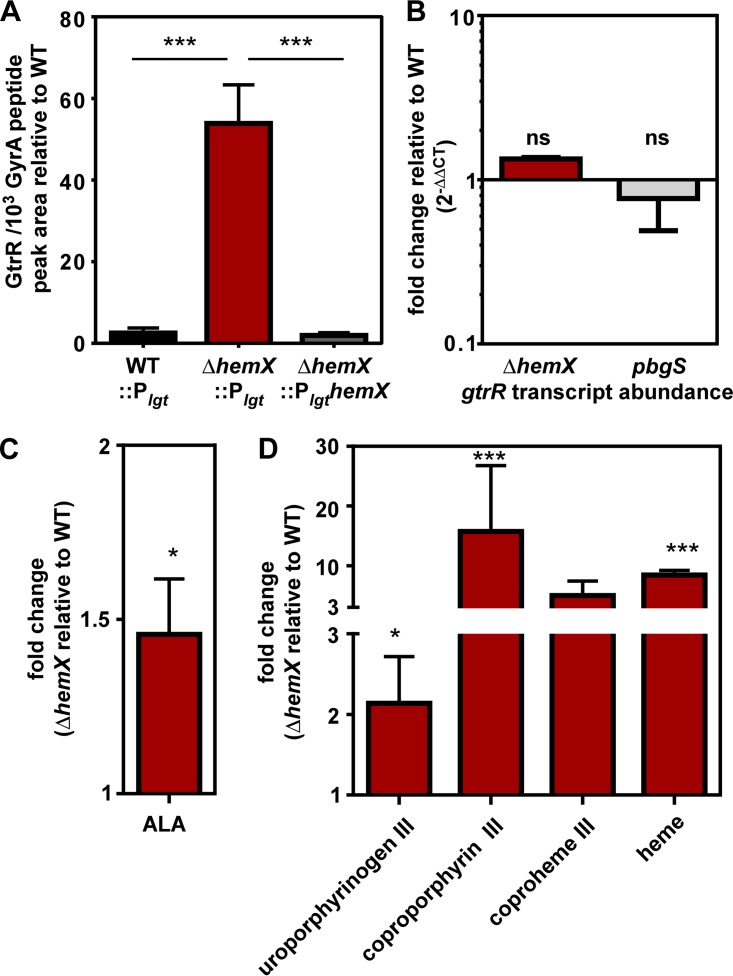FIG 2 .
HemX regulates heme synthesis by maintaining low levels of GtrR in heme-proficient cells. (A) The abundance of GtrR was measured by LC-MRM-MS/MS in multiple S. aureus strains. The data are the average from a single experiment performed in biological triplicate with standard deviation shown. Statistical significance was determined using a one-way ANOVA with Dunnett’s correction for multiple comparisons, comparing GtrR abundance for each strain relative to the ΔhemX::Plgt strain. ***, P < 0.001. (B) Steady-state transcript abundance of gtrR mRNA isolated from mid-exponential growth of S. aureus strains was measured by qRT-PCR and is graphed as fold change relative to the WT. Data are combined from two independent experiments in biological triplicate with standard deviation shown. “ns” indicates no significance by one-way ANOVA with Dunnett’s correction for multiple comparisons, comparing fold change of the pbgS and ΔhemX strains to the WT. (C) δ-Aminolevulinic acid (ALA) abundance was measured in S. aureus strains by a spectrophotometric quantification. Graphed is the fold change of ALA in the ΔhemX mutant relative to the WT, with data combined from two independent experiments with three biological replicates with standard error of the mean shown. (D) Uroporphyrinogen III (detected as uroporphyin III), coproporphyrin III, coproheme III, and heme were quantified by LC-qTOF-MS. Graphed is the fold change of metabolite abundance in the ΔhemX mutant relative to the WT, from a single experiment performed in biological triplicate with standard error of the mean shown. For panels C and D, statistical significance was determined with Student’s t test comparing the ΔhemX mutant to the WT before data transformation to fold change. *, P < 0.05; ***, P < 0.0001.

